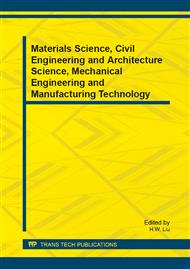p.782
p.786
p.790
p.795
p.799
p.803
p.809
p.813
p.817
A Coupled Elastic-Plastic Damage Model for Rock Material
Abstract:
With complex mechanics character and under the action of compression and tension in tri-direction, rock will show coupled plastic-damage mechanism as its basic character. Phenomenological coupled elastic-plastic-damage constitutive model with internal variable is proposed based on thermal mechanics theory, elastic law and macro damage mechanics. Numerical experiments on this model and analyze the model character. The result shows that the coupling model could realize rocks softening behavior brought about by damage and strength enlargement caused by confining pressure increasing.
Info:
Periodical:
Pages:
799-802
Citation:
Online since:
January 2014
Authors:
Keywords:
Price:
Сopyright:
© 2014 Trans Tech Publications Ltd. All Rights Reserved
Share:
Citation:


